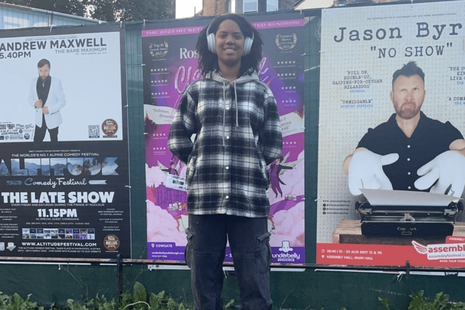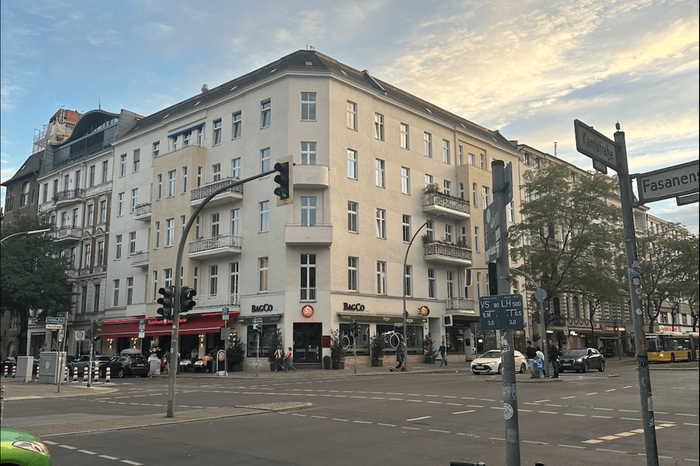Day in the life: working at Edinburgh Fringe
Scotia Smith takes a peek behind the scenes at Edinburgh Festival Fringe

Waking up comes real slow and relaxed as the alarm ringer blasts obtrusively into the shared bedroom. The day is kind enough to come softly into focus. As I take in the unfamiliar surroundings, I begin to remember I’m in Edinburgh after arriving ridiculously late last night. The reason for my five-plus hour train journey into Scotland’s capital? The opportunity to shadow my friend, Tiana, who is employed as a technician for the Edinburgh Festival Fringe.
Edinburgh Festival Fringe (or Fringe) began in 1947 and has since become the largest arts festival in the world. Fringe is open to any individual with a performance, be it a stand-up comedy act, a new writing script to show off or an established play to put on. As Fringe is a highly attended festival, it requires an army of committed workers from all walks of life: students, veteran technicians and volunteers.
“The mountainous terrain was something I wasn’t prepared for as I donned my Dr Martens leather lace-up boots”
Garnished in her company’s dark navy uniform, carrying a cup of coffee, we leave her accommodation around 12pm. It’s a gruelling 25-minute walk up and down Edinburgh’s innumerable hills. The mountainous terrain was something I wasn’t prepared for as I donned my Dr Martens leather lace-up boots.
The reason we headed into the capital’s centre was to watch a few of the shows the Fringe had to offer, especially as Tiana could get into them for free with her worker’s pass (and so could I via association). Going to see an abundance of shows offers the chance to tour Edinburgh itself. However, this proved more difficult than I’d anticipated as much like a scene in an American high school movie where the popular main character daps everyone up in a school corridor, we bump into, greet and converse with at least fifty of Tiana’s newfound Fringe friends on the journey. “One of the best things about Fringe for me personally, is the opportunity to meet so many new people. It feels more like a social event, than a job we are getting paid for,” she summarises after we reach the final show we get to watch that day.
At 4pm her work day begins. She had a changeover between two shows to manage, which involved checking the Annexe or the “Holy Grail” as it is more popularly known. The Annexe is a diary of notes on every show her venue puts on for tech members to know what they need to do for each show. As well as this, changeovers involve moving lights to how specific shows would like them. I was given her job of opening windows, saving the next audience from having the room feel stuffy and hot. You’re welcome.
“Accessibility is a huge aspect of Fringe so everyday workers get an accessibility report with a list of anyone who’s bought a ticket who needs extra help…”
Tiana also dabbles in front-of-house work such as scanning tickets, queue management, and standing at venue entrance doors to make sure people know where they’re going. “Also,” she continues, “Accessibility is a huge aspect of Fringe so everyday workers get an accessibility report with a list of anyone who’s bought a ticket who needs extra help, like using a lift, or if they’re in a wheelchair, anything like that”.
During her hour break at 7pm, Tiana rushes off to deal with an emergency leaving me in the venue office alone. She didn’t return for about half an hour and in that time I managed to sit in the head of the company’s chair. When he eventually entered the office with his newly bought fish and chips, he marched over and stared at me until I clocked it was my seat he wanted.
Along with certain customs I didn’t understand, there was also lingo used that was unintelligible to the uninitiated like myself. Technical terms like QLAB and XLR were thrown around nonchalantly between stressed technicians. “It can get stressful, most people working here are students doing different degrees that are not theatre technology. Of course it can get stressful.”
“At 8pm, the fun begins,” and by fun, she means she gets the chance to operate shows. Every performance is different. The first show I observed her work was simply turning the house lights up and down whereas another had a long list of sound and lighting cues that she had to do at various times throughout the show. She commanded the room to get the shows up and running, solving minor problems that would ruin the entire production if left unchecked. In the middle of her final show, a faulty headset mic fell down a performer’s top which could have an immense impact on the quality of the show. Tiana had, however, set up handheld mics at the back of the stage in anticipation for something going wrong with the headset mics as the show contained rigorous dance numbers. “When I’m operating a show I survive off a mantra of ‘It’s fine. It’s fine. It’ll all work out’ and it does, always.”
When her shift finishes at 12pm, we head to a Quiz Night put on by her company where we answer questions ranging from the length of Queen Elizabeth’s II reign to guessing the famous person her colleague’s pug is dressed up as.
After coming in an acceptable fifth place out of six teams, we feel we deserve to celebrate in the local pub until 5am with some characters I met during our walk down to the city centre earlier in the day.
Throughout the day, I realised that the business of stage techs and behind-the-scenes workers is crucial to the smooth running of Fringe and a major reason why it has been so successful for so long. Without these passionate individuals, the Edinburgh Festival Fringe would be nothing.
I end the night with a step count of 25,000, a ruined sleep schedule and a 9am alarm to catch the next train home.
 News / Cambridge welcomes UK rejoining the Erasmus scheme20 December 2025
News / Cambridge welcomes UK rejoining the Erasmus scheme20 December 2025 News / CUP announces funding scheme for under-represented academics19 December 2025
News / CUP announces funding scheme for under-represented academics19 December 2025 News / News in Brief: humanoid chatbots, holiday specials, and harmonious scholarships21 December 2025
News / News in Brief: humanoid chatbots, holiday specials, and harmonious scholarships21 December 2025 News / SU reluctantly registers controversial women’s soc18 December 2025
News / SU reluctantly registers controversial women’s soc18 December 2025 Lifestyle / All I want for Christmas is a new hanukkiah22 December 2025
Lifestyle / All I want for Christmas is a new hanukkiah22 December 2025










